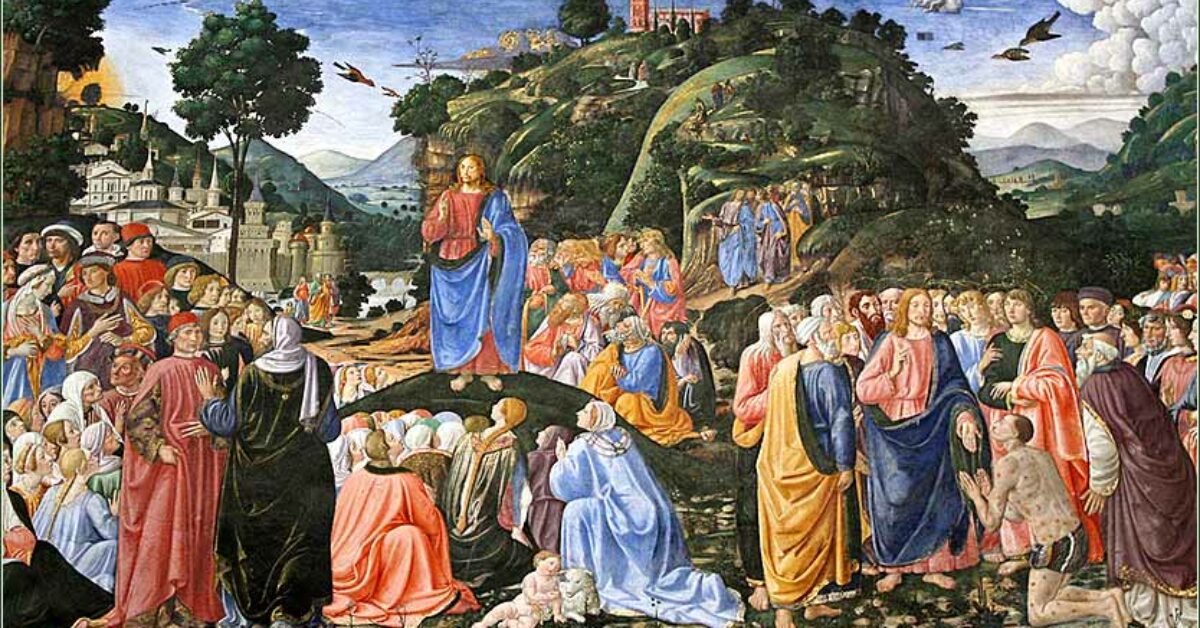A Ritual Journey: The Presentation of the Lord’s Prayer
In our current liturgical journey we have crossed the threshold of the Triduum into the Great Week of Weeks, the Easter Season. The neophytes’ attention now turns to mystagogical interpretation of their initiatory experience. But we must finish our ritual journey in this blog. Finishing that journey takes us back to the Fifth Week in Lent, following the Third Scrutiny on the 5th Sunday in Lent, when the Presentation of the Lord’s Prayer takes place. The RCIA recommends a weekday, while Welcome to Christ designates the Fifth Sunday in Lent. As I indicated in the post on the Presentation of the Creed, the Guide for Celebrating Christian Initiation with Adults [GCCIA] contends that these presentations
Sum up and ritualize the entire action of what has taken place during the formation of those intending to receive the initiation sacraments: their coming to know and accept the Church’s teachings and their deepening faith in the one God through a relationship with Jesus Christ. These rites also prepare the elect to take their place among the faithful at worship, particularly in the celebration of the Eucharist, when they will profess the faith of the Church in the Creed and call upon God as Father, as Jesus taught his followers to do. These two actions are the privilege of the baptized (p. 64).
These rites make the most sense in the midst of a regular dismissal of the catechumens to study the Word during the celebration of the Lord’s Supper. They would not be confessing the Creed or praying the Lord’s Prayer as part of the liturgical assembly. While this would presumably not be their first introduction to the Creed and the Lord’s Prayer, it would be their first opportunity to truly make them their own. Apart from a regular dismissal pattern, the presentations of the Creed and Lord’s Prayer might best come earlier in the catechumenal process.
A simple ritual structures the presentation of the Lord’s Prayer by the assembly and the reception of the Lord’s Prayer by the elect. The central elements of the rite are the homily and the Gospel Reading from Matthew in which the Lord instructs the disciples how to pray. The rite in Welcome to Christ is focused on prayer in general and does not include an actual presentation of the Lord’s Prayer. It does include a presentation of a book of worship. [GCCIA observes that a beautiful copy of the Lord’s Prayer could be presented after the rite.] The outlines of the rite during the Offertory in the RCIA and in Welcome to Christ are as follows:
RCIA
Readings
Gospel Reading from Matthew (Presentation of the Lord’s Prayer)
Homily
Prayer over the Elect
Dismissal of the Elect
Welcome to Christ
Readings
Homily
Creed
Commitment to Prayer
Presentation of a Book of Worship
Blessing of the Candidates
In the RCIA the elect are called to gather in the front of the nave, facing the pulpit, before the reading of the Gospel. They are instructed to listen attentively to how the Lord teaches his disciples to pray. The homily catechetically “opens up the meaning and importance of the prayer for both the elect and the faithful” (GCCIA, 73). While the prayers and dismissal in the RCIA do not contain any explicit references to the Lord’s Prayer or to prayer in general, Welcome to Christ includes a call to commitment to prayer for each season of the church year. The text for year B reads, “As the disciples were taught to follow Jesus by living their life for others, so the church prays for you and for all the needs of the world, confident in the life-giving presence and mercy of Christ” (Welcome to Christ, 32). With this rite the elect have been given two primary elements of their catechetical formation in the faith and are prepared to confess and pray them at their initiation into Christ through Holy Baptism.
